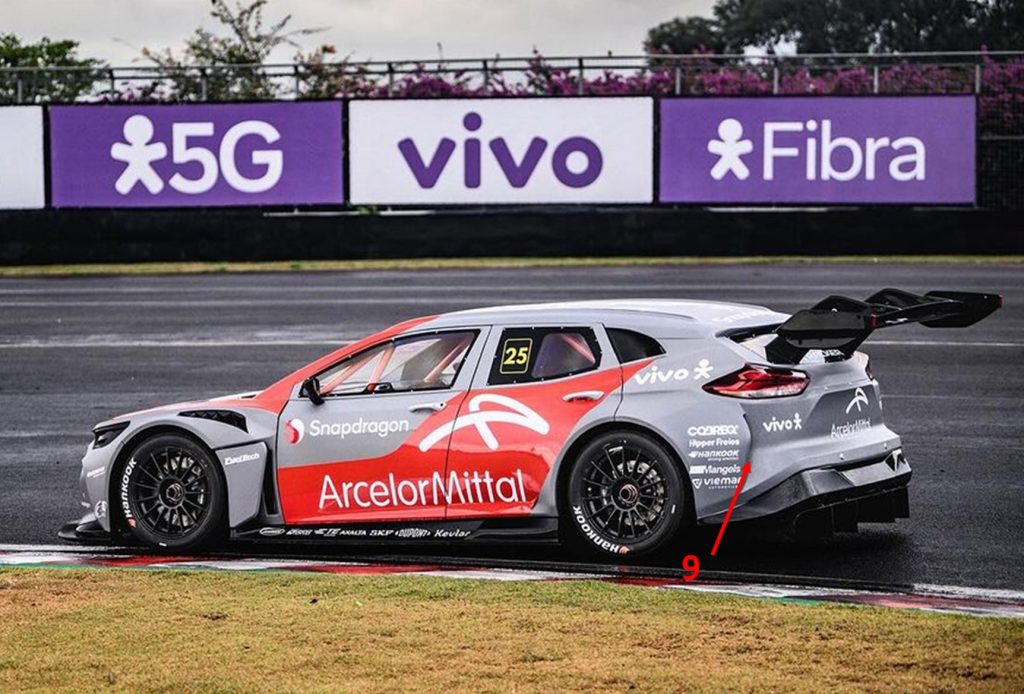In the Goiânia round, which will be held on July 27th and 28th, Vicar will present the first prototype of the SNG01, the new car developed for Stock Car, which will debut on the race tracks in the 2025 season. This is the first of the SUVs from the three brands that have already confirmed their participation in the next season to be shown in real life. In our post today, we will learn in detail about the specifications of the new car for the main category of Brazilian motorsports.
1. Chassis
The SNG01’s innovations begin with the chassis, designed by Fábio Birolini and which continues to be of tubular construction as in the current Giaffone JL-G09B but adopting ArcelorMittal’s DP980R steel to replace the traditional 4130 and Docol R8 used in competition applications. For the new Stock Car, the chassis will be 1960 mm wide and have a 2750 mm wheelbase, in contrast to the 1880 mm and 2740 mm, respectively, of the 2023 Stock Car.
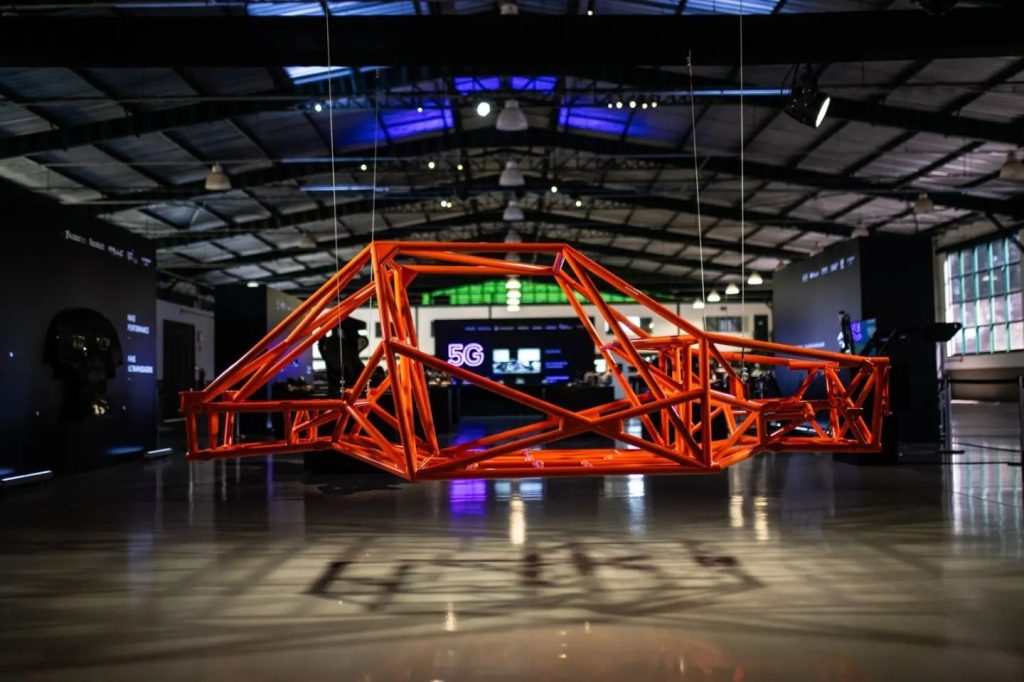
This alloy specification was developed specifically by ArcelorMittal for Stock Car, and consists of a dual phase steel (steels generally composed of a ferritic matrix with islands of martensite or bainite) that features high tensile strength and energy absorption capacity in the event of collisions. Dual phase steels are widely used in the automotive industry, allowing for greater mechanical strength at a lower weight than traditional steels. According to Audace Tech, this steel has better properties than other steels on the market, allowing for greater structural rigidity for the same weight (the complete chassis weighs 160 kg).
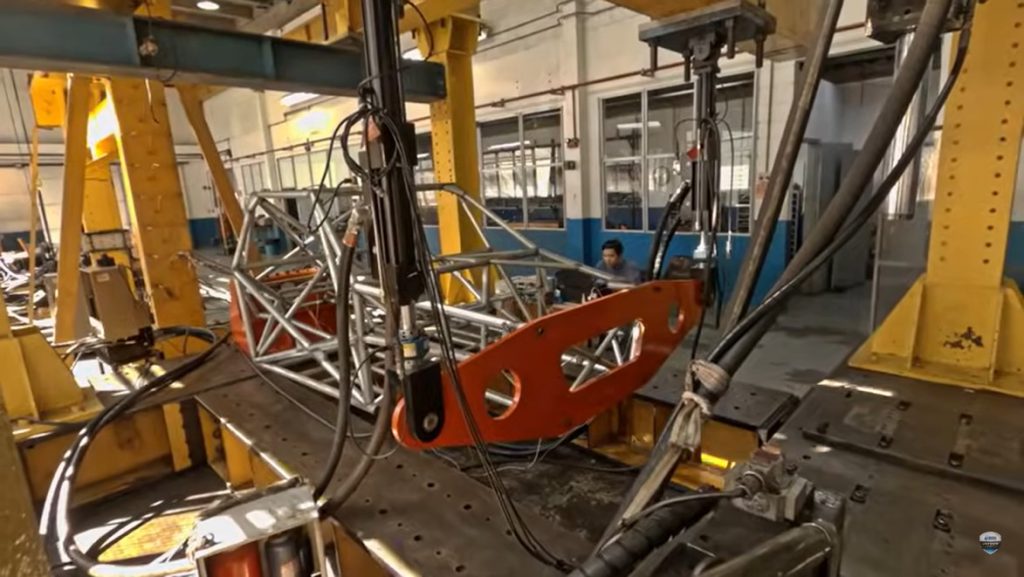
The chassis also underwent torsion and fatigue tests in 1,000 cycles in IPT laboratories to validate the computer simulation data and the chassis production process, ensuring the car’s safety and performance on the track. In addition, the partnership with IPT included crash test and impact absorption simulations of the structure.
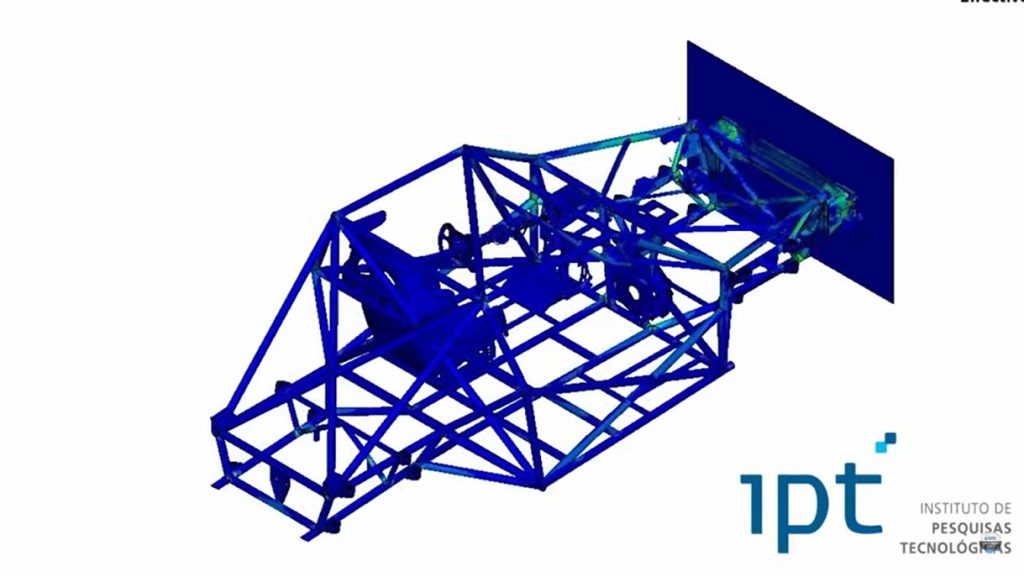
In terms of safety, for example, the chassis features Impaxx side impact absorbers, similar to NASCAR cars.
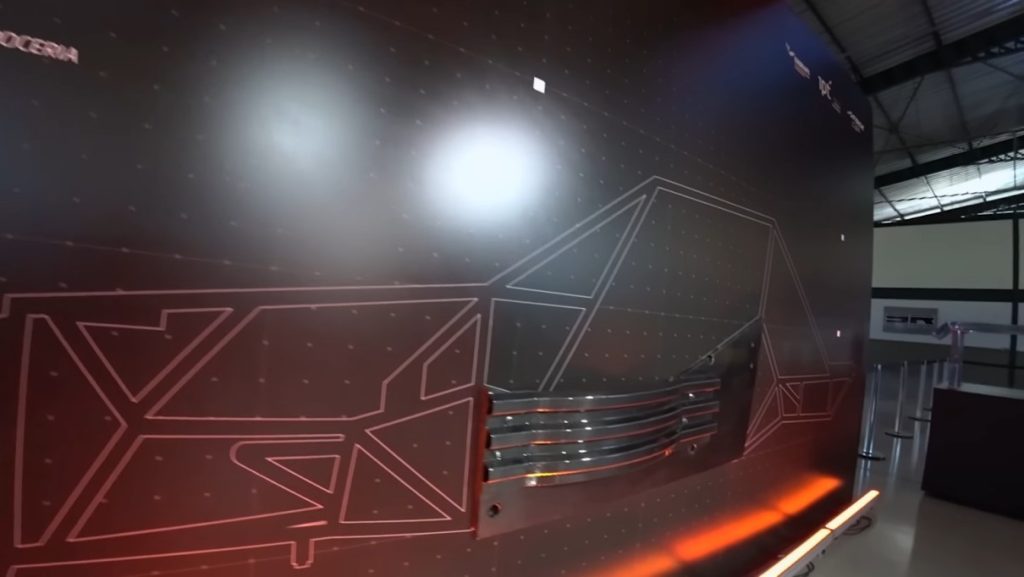
The chassis manufacturing (tube cutting, welding and three-dimensional measurement) will be carried out by Espas Brasil, a subsidiary of the Japanese company Infec Corporation, which specializes in manufacturing prototype components for the automotive industry.
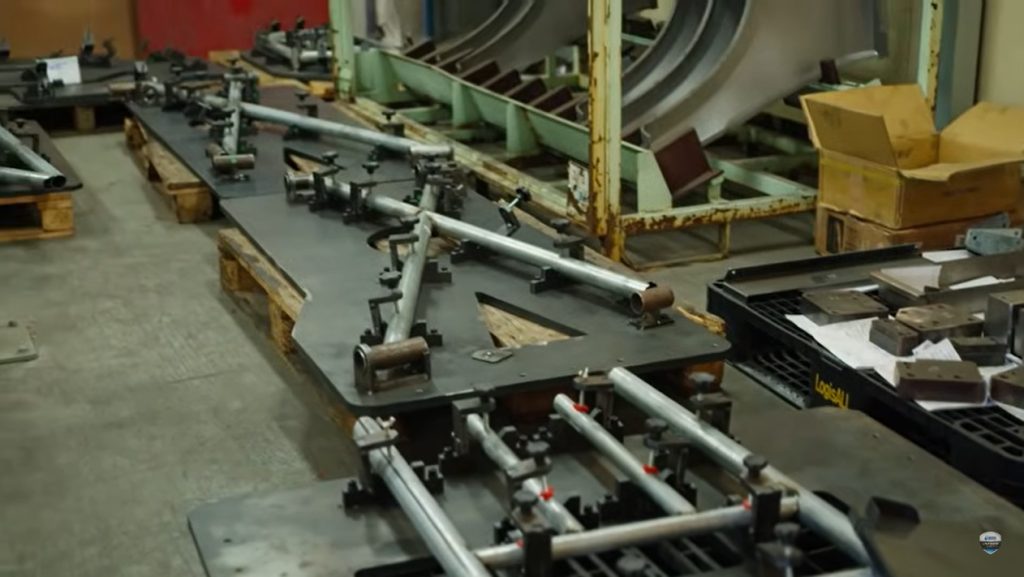
Furthermore, the welding process will be robotized, ensuring greater repeatability and equality between chassis, and consequently competition on the track.
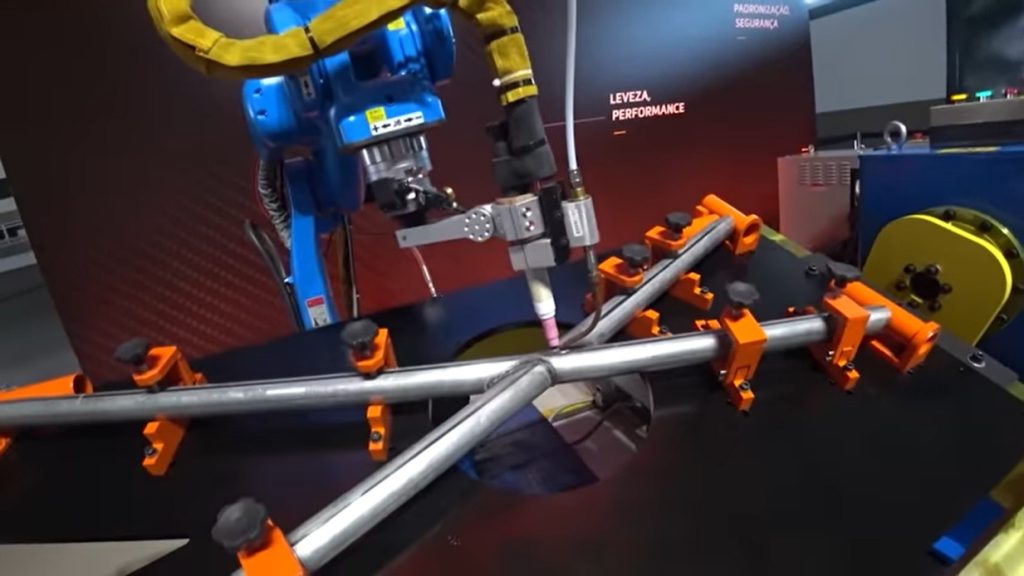
The suspension is independent double A type, with pushrod system and adjustable Penske shock absorbers all-around. The 18-inch wheels were developed by the Brazilian company Mangels, housing HipperFreios ventilated disc brakes, with Cobreq pads and AP Racing calipers with six pistons at the front and four pistons at the rear.

2. Powertrain
The new generation of Stock Car also bets on a change in engine: the naturally aspirated V8 engines will be replaced by in-line 4-cylinder, 2.1-liter turbocharged engines, developed by Audacetech. For the development, Audacetech brought in the experienced Rafael Cardoso from Motorcar, who among others provided track support and engines for AJR and Sigma models in Endurance Brasil.
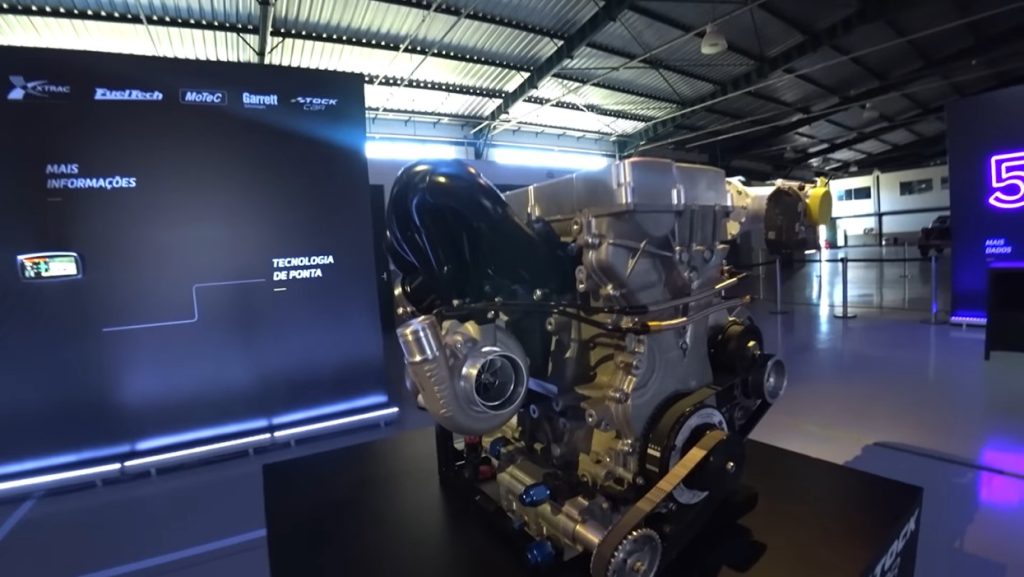
Although the promotional material is vague about the engine’s origin, it is clear that the engine block at leas is based on a Cosworth Duratec, with several MTR components and a Garrett G30 turbocharger of an as-yet-undisclosed model, a family developed specifically for competition engines between 2.0 and 3.5 liters. With this package, the engine has a reported power of 500 hp, with maximum torque of 580 N.m.
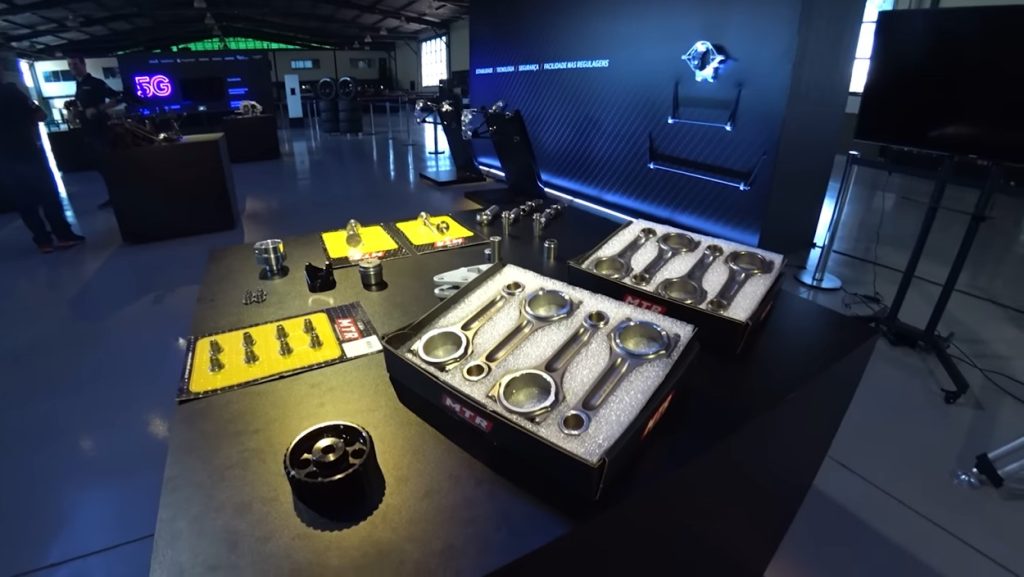
One of the interesting things about this engine is that the alternator will not be driven by the engine, but rather by the transmission. Another peculiarity is that, at least in the images from the SNG01 launch event at Velocittà, the place where the traditional mechanical water pump would be mounted was closed with a metal cover (red arrow below), which suggests that the cooling system will be driven by an electric water pump, as is already the case in some hybrid vehicles.
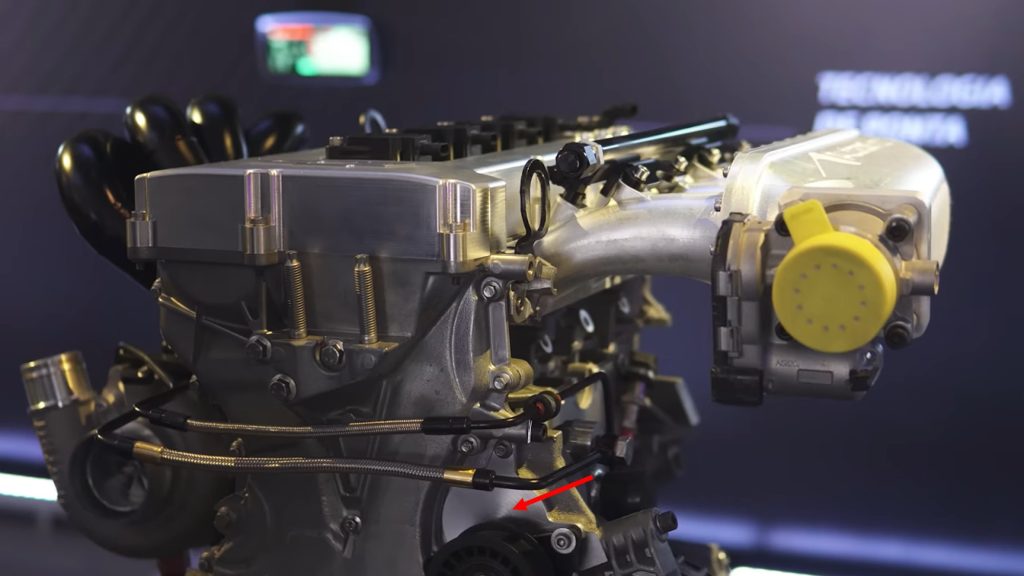
The transmission is a six-speed Xtrac P1529 sequential, the same type used in GT models such as the Ferrari 488 GTE, Lamborghini Huracán Super Trofeo, Honda NSX GT3 and others of the same type, which should guarantee a good reliability index, since it is homologated up to 800 N.m and has an extensive history of use in endurance racing. In addition to the alternator, the starter motor, flywheel and clutch are positioned next to the gearbox at the rear, while the engine is in a central position at the front, helping to improve weight distribution.
3. Eletronics
The car’s electronic management will be done through a FuelTech FT700+, managing the engine, transmission and acting on engine maps and activation of vehicle elements, together with a PDM system from Motec and the steering wheel from the Dutch company Grid Engineering.
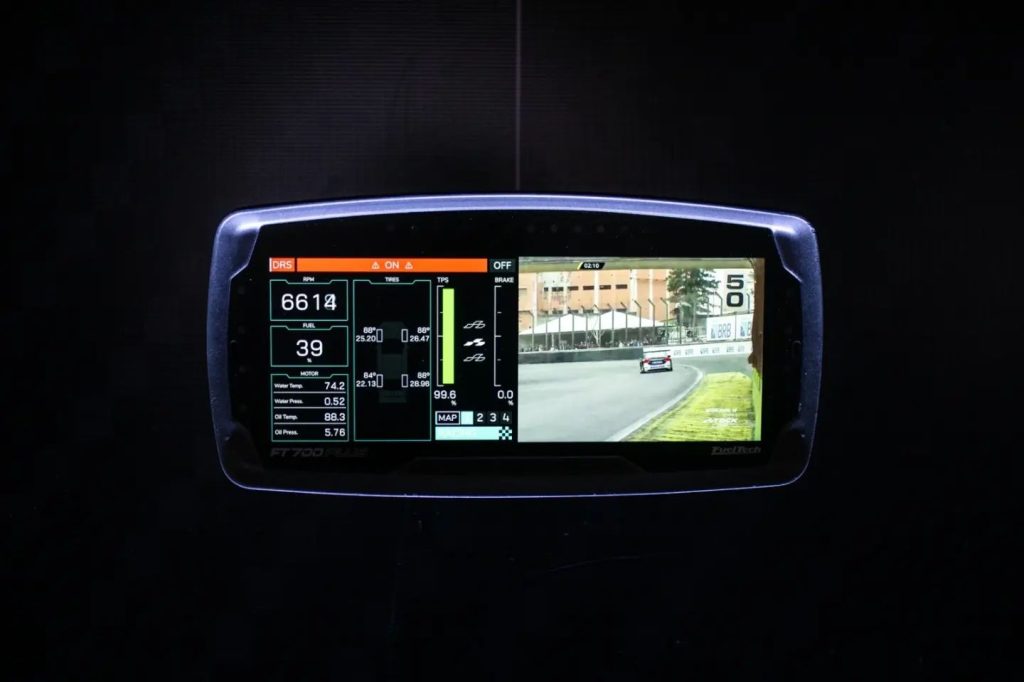
In addition, the car will have a Qualcomm Snapdragon 5G connection for data transmission to the teams, organization, including front and rear cameras and an internal 360º camera for the public to follow the driver inside the car.
4. Design
Another big new feature of the new Stock Cars is the change in bodywork: traditional sedans are out of the picture and are being replaced by SUV-inspired bodywork. Despite the rejection of much of the public, the movement is somewhat inevitable, since mid-size sedans no longer make up a relevant share of the market – while in 2003 the SUV options were limited to the recently launched EcoSport and Blazer, in addition to imported models – in 2023 SUV sales represented more than 40% of new cars sold. In the same period, the supply of mid-size sedans in the Brazilian market declined and is now limited to the Corolla, Civic, Sentra and Jetta, in addition to models from premium brands such as Mercedes, Audi and BMW.

Therefore, a change was inevitable if the organization sought to maintain the involvement of automakers, since with the changing market, sedans are no longer commercially attractive for marketing investments. The same path was also chosen by the Argentine TC2000, which presented its prototype of the VW Nivus for the category at the end of 2023, which should be followed by models from other automakers.

As a silhouette, that is, a model with bodywork inspired by those of a street car, the SNG01 has a different approach to aerodynamic optimization from prototypes and formulas, with greater aesthetic compromises in relation to performance. Designer João Paulo Cunha Melo was in charge of conceiving the design of the new cars, creating the “Inverso” concept, a proposal where the design of the cars was conceived as if the car had been born first for the track, and then adapted for street models.
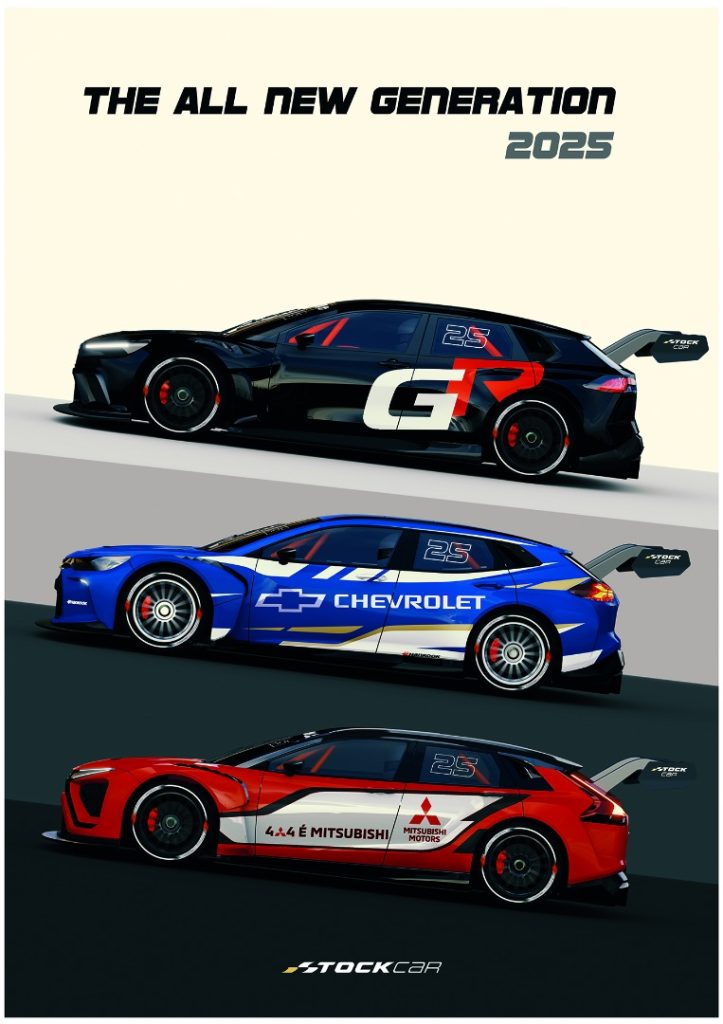
The result of marrying this philosophy with the dimensions of the Stock Car resulted in a more aggressive and robust design, giving the SUVs a very interesting look, almost like a shooting brake. In any case, the result of the change in car typology was clear, with Mitsubishi announcing its return to the category after a hiatus of more than 17 years, and with a possible fourth manufacturer on the way.

The new bodywork, by the way, is once again made of composite material, a mix of carbon fiber, fiberglass, aramid and Kevlar elements, which according to the first announcements, would be manufactured by the Brazilian company RALLC Usinagem & Composto. However, in recent announcements, the manufacturing of the bodywork is attributed to the Canadian company Magna, in a change of route that may result in longer lead times for replacement components and manufacturing costs Edit 01-August-2024: I received the information from a source close to the topic that there was an error on the press release from Stock Car, and actually the bodywork will be made by Brazilian company Magna Compósitos. The reason for this change was not communicated by Audacetech.
5. Aerodynamics
Finally, we come to the aerodynamics of the SNG01. So far, the only physical bodywork presented is the one based on the Chevrolet Tracker, so our analysis will be based on that. However, although some elements will inevitably differ between manufacturers, the expectation is that the main elements will be the same, since the chassis will always be the same, and the objective of the category is to ensure equal performance between the different brands.
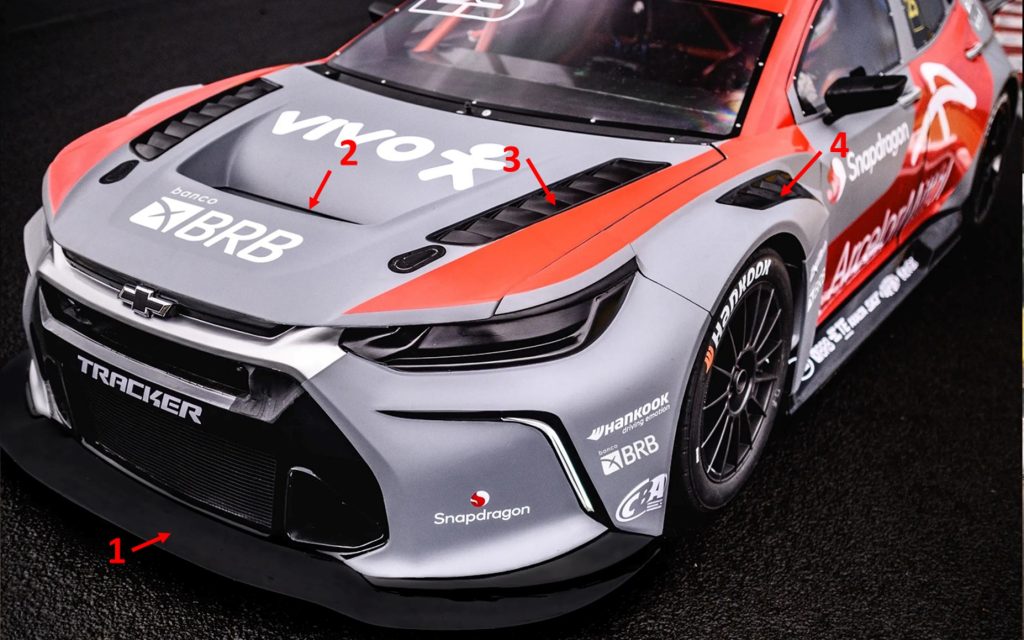
At the front, the SNG01 features a diffuser (1), which can be seen in more detail in the image below, with two lateral expansion zones in front of the wheels and a central expansion zone. In addition, the hood features an opening for radiator ventilation (2), an element that is not present on the current Stock models. Moreover, two sets of louvres (3) are also present on the hood, and the wheel arches also feature ventilation through louvres (4).
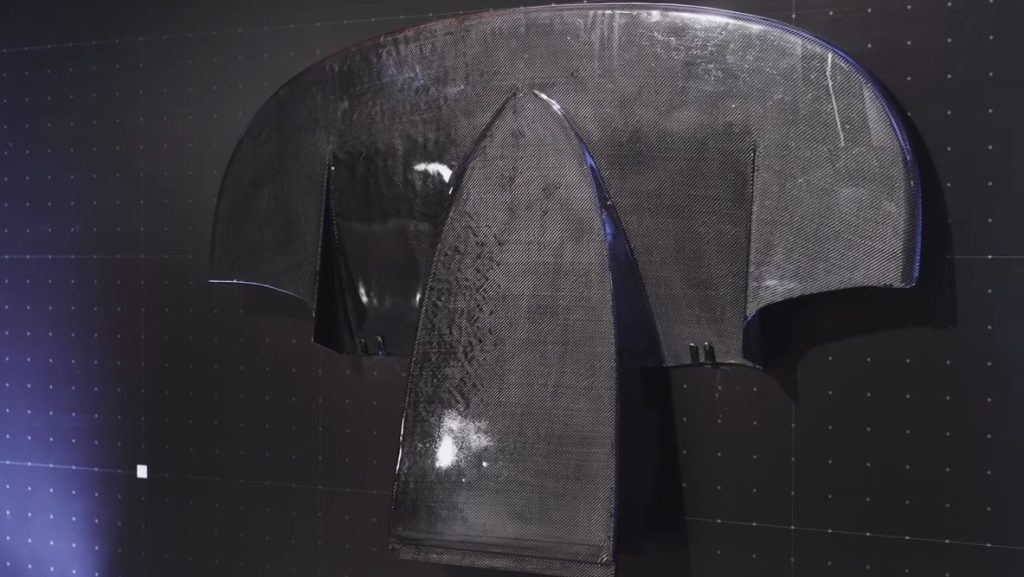
Moving on to the central and rear section of the car, the exhaust outlets are positioned on the right side, just after the front wheel (5), where there is also another ventilation opening (6). At the rear, the spoiler (7) has swan neck supports (7) and a DRS system, working in conjunction with the rear diffuser (8).
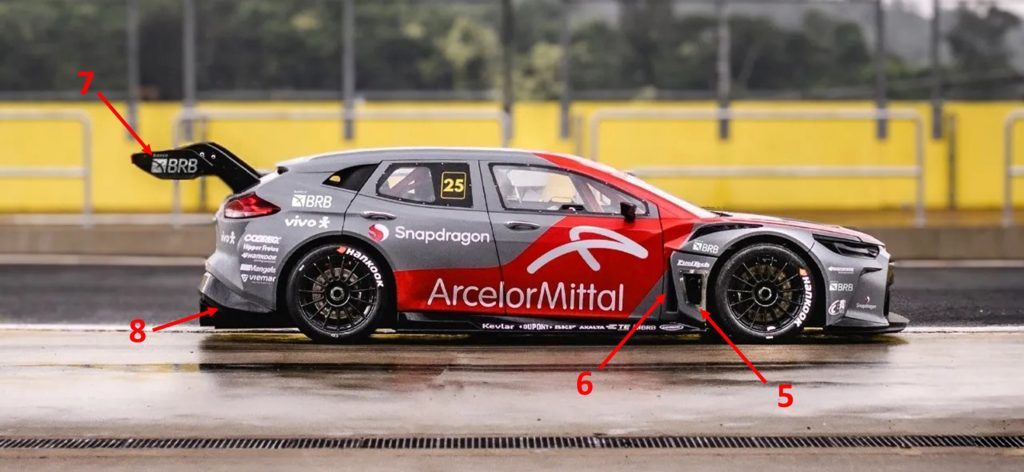
It is interesting to note the construction of the rear wing, which integrates the DRS actuation rod inside the supports, but it is not yet clear what type of actuation (electric, hydraulic or pneumatic) it is, nor where the actuator is positioned on the car.
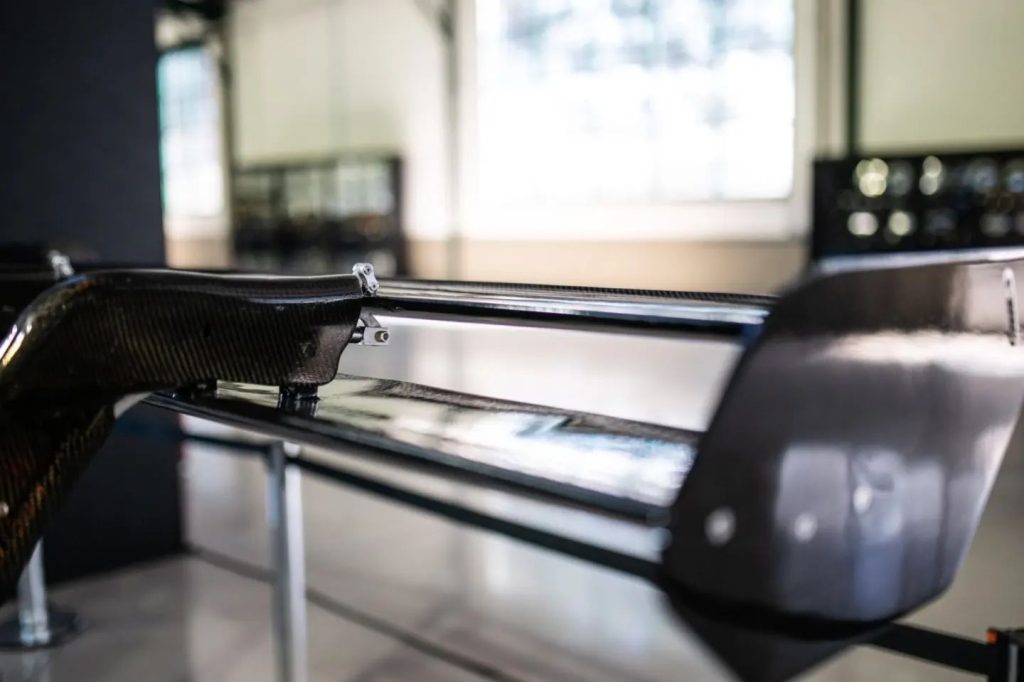
Another aerodynamic element at the rear are the rear wheel arch ventilation openings (9).
